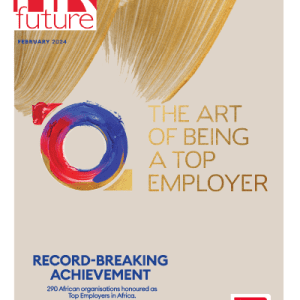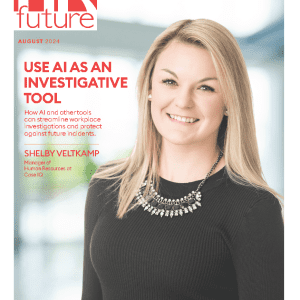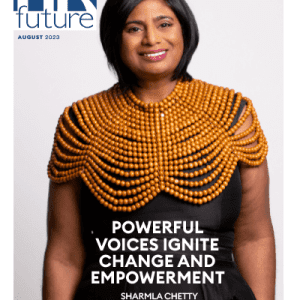Nellie Borrero explains to Alan Hosking the importance of promoting inclusion and diversity in organisations.
What exactly do you mean by inclusion and diversity?
Inclusion is a choice we make every single day, so every day we will decide how inclusive or non-inclusive we want to be. An example that resonates well with anyone around the world is to picture a networking event.
You are very comfortable talking to people you know, and you see that there are others who are having a more challenging time integrating themselves into a conversation.
At that point in time, you make a decision as to whether or not you want to be inclusive. You can decide to integrate and welcome that person or you can decide not to.
Diversity is a little bit different. The difference we represent is a fact so, if I take myself as an example, I’m a woman, I was born and raised in the United States, and I’m of Hispanic American or Latino background.
I can’t change that reality of mine –it’s just a fact. We therefore need to create an environment where people are fully authentic to who they are without feeling that they have to assimilate to something that’s different.
If we do so, we’ll get more out of those individuals – more as far as delivery and as far as engagement are concerned, because they are comfortable in their own skin. Inclusion is therefore a choice we make, while diversity is a fact, a reality.
Why are inclusion and diversity important in the workplace?
There are four places on earth that we as human beings would like to ensure that we feel respected, welcomed and loved. They are your family unit, your community, your religious institution, if you align yourself to a religious institution, and your work place.
We cannot control someone’s family unit. We have limited power to control impact on a community, through corporate citizenship and other things we do. We have limited power to impact a religious institution, but we have a whole lot of power as to how we can impact a workplace.
We have a responsibility to ensure that we create an environment where people that join our organisation feel that they can achieve their goals and can aspire to achieve their dreams. We can create that environment to enable them to do that. So our responsibility is to make them feel valued and respected in the workplace.
We have power to change our environment, to welcome and respect differences. That together is very powerful, and it’s critically important that people understand that. When I travel around the world, I find that, for the most part, people want to embrace differences.
The challenge is sometimes that they lack awareness of how to have conversations and dialogues with people who are different, and they are afraid to offend. Because they are afraid to offend, they’d rather shy away from having a conversation which is so critically important for them to get to know an individual.
How have you found leaders’ attitude to inclusion and diversity?
What I have found with leaders around the world is that it’s not that leaders truly want to be non-inclusive or outright racist or sexist. Leaders have multiple competing priorities and, because they have multiple competing priorities, sometimes they don’t take the time to pause and recognise how their behaviours may be impacting others either in a positive or negative way.
These could be projects that they are leading or it could be something in their personal lives. There is so much going on every single day. The first thing they think about is what they have to accomplish that day.
What are their deliverables, what are the expectations that they have for the day and what are they appointed to do, and whether it’s family, whether there are other responsibilities, that’s what they think about.
Leaders don’t get up thinking, “How am I going to be able to really create an environment that is truly 100% inclusive?” Those are things that we have to programme ourselves to think about, probably on a daily basis. So, as we think about creating this environment, we have to discipline ourselves to understand this as a business imperative.
Just as we think about having to balance budgets, we have to think about staffing, we have to think about selling more to our clients, and we have to start thinking about inclusion and diversity as a business imperative and a business responsibility.
Many organisations started thinking that diversity was the nice thing to do, then it evolved to the right thing to do, then it evolved to, “What’s the business case around this? What’s the return on investment around this
And then we got to, “Who’s accountable to ensure that we have the metrics in place and the programmes in place to embrace and grow our diverse talent?” And now it’s about diversity being a responsibility so everyone is responsible for creating that inclusive environment.
Does the approach differ from country to country?
Each country is at a different maturity level regarding diversity. There are some countries that are very progressive on inclusion and diversity. They have done a very good job of empowering all segments of diversity.
The United States and the UK have led the way significantly in this space. Australia is really starting to lead in this space. Japan is really pushing forward on the women’s agenda in a very innovative and creative way to tackle the gap around women and leadership.
So I have seen that the discussion volume around inclusion and diversity has increased significantly. Today, almost every organisation on this planet is talking about diversity. People recognise the need for it. We have finally gotten to a place as a culture in many parts of the world that this is now viewed as a business imperative.
What can people do to embrace inclusion and diversity?
I always tell people that courage is critical because, in order to change, you have got to embrace new ways of thinking. It takes courage. People need to understand why sometimes people either contribute or don’t contribute. If you are in a room and you see a lot of people are talking and others are not, don’t dismiss that silent person.
Try to understand what is behind their behaviour. Chances are that, if you develop a relationship with that individual, they will start to get to a place of comfort and come out of their shell and really contribute.
Are there differences in diversity issues according to geographical locations?
Each geography has its own challenges. The US and South Africa are more focused on ethnicity. Is ethnicity something Japan’s going to be focusing on? Probably not. I know that there are different value systems and different business imperatives.
If one looks at the women’s agenda, across every single geography, that is a priority. Full stop.
Regarding the LGBT community, there are countries that are very advanced. There are also countries where there is a law against such communities. There are countries where one wants to make sure that your first priority is the safety of your LGBT employees.
So there are countries around the world where one has to be very cautious. One doesn’t want someone to come out in a country that they don’t feel comfortable coming out, where they may feel they may be physically harmed.
What are some countries doing on inclusion and diversity?
The UK does a lot around women and a lot around the ethnic agenda. They probably took the lead regarding persons with disabilities to take it beyond the visible and go to the non-visible, and they did that several years ago. They partnered with external organisations to understand what the challenges are, what the classification of disabilities are, and what the responsibilities of organisations are.
They started hosting webcasts about how to address depression, which is a topic that not too many organisations were talking about at the time, and really getting people to talk about their experiences. They went as far as talking about postpartum depression as well, and what women may face. They talked about bipolar conditions many years ago, when it wasn’t really a topic that a lot of organisations were talking about.
The US has done that as well. Our Canada office recently did a campaign that I thought was brilliant. What they did for mental awareness week was have buttons that represented different things. The buttons said things like, “Happy”, “Sad”, “Uncomfortable” or whatever. They laid these out in an open space in the office and asked employees to pick a button that represented their mood for the day. The intention was to help people understand that mentally we may not all be in the same place.
We might have different things that impact us and we have to recognise that. At the end of the day, you have clarity because you are able to see how the person identifies their mood for the day. But, on any other day, you don’t see that so you interpret people’s reactions very differently because you don’t know what they’re feeling inside.
Nellie Borrero is Managing Director, Senior Strategic Advisor – Global Inclusion and Diversity at Accenture, based in the metro New York office. She focuses on the women’s agenda globally, on ethnicity and heritage in the US, UK and South Africa, on the LGBT community globally, and on persons with disabilities and cross cultural relationships.





















